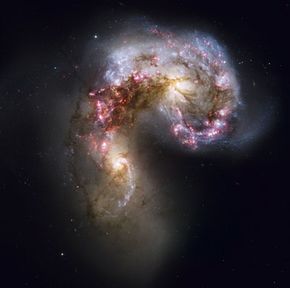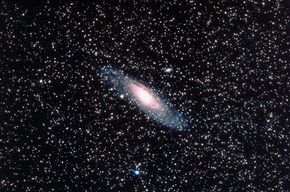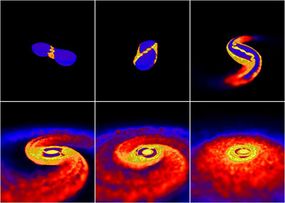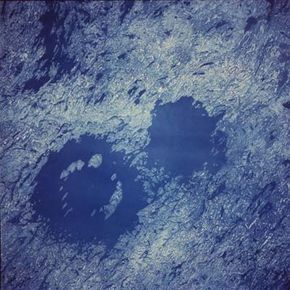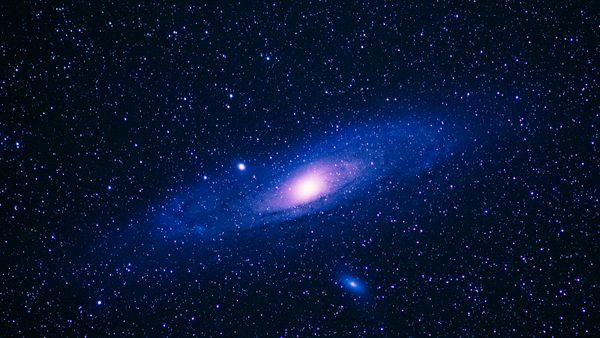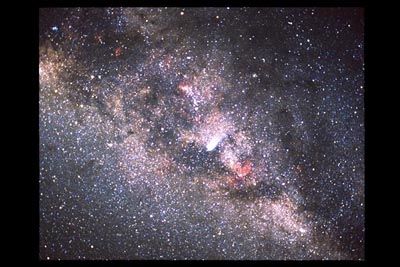When you look up at the night sky, how do you feel? Sometimes, if it's a clear night without any clouds and you're far away from any city lights, you can lift your head up and take in a beautiful view of countless stars. Although we know they're massive, swirling clouds of extremely hot dust and gas, they all look pretty peaceful from here on Earth.
What if, millions of light years away, things aren't so nice and soothing? Although it's hard to imagine, it's possible a number of those stars could be on their way toward (or have already experienced, because of the way light travels) a space collision.
Advertisement
Although the stars look fixed from our point of view on Earth, they're actually moving very rapidly through space, and without anything to steer them away, there's always the chance they could run into another massive body. It's almost like the universe is a giant pool table without any rail cushions. A space collision is just what it sounds like -- one body, whether it's a star, an asteroid or a comet, crashes into another body. The results are often spectacular displays of energy and matter, although much different from something like the explosion caused by an atomic bomb.
What happens when stars -- or even galaxies, for that matter -- collide? Are space collisions a rare and dangerous occurrence, or do they happen pretty frequently? Could the Earth or the solar system suffer from a space collision, whether from an asteroid or a massive supergalaxy? To learn about what happens when stars get a little too close for comfort, read the next page.
Advertisement
